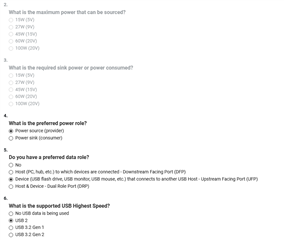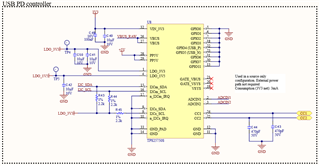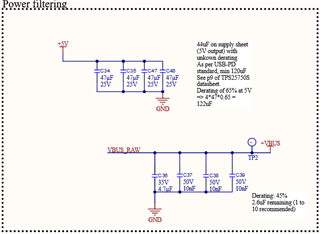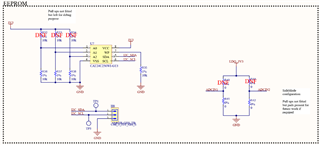Hi,
I am using the TPS25750S on one of my design with the following goals (for my device):
- Act as a device in the USB data transmission
- Act as a source for power
- Use USB-C
The goal is to charge a USB-C Samsung tablet, while the latter handles the communications.
My design integrates the same EEPROM model as the EVM (evaluation module) and the I2C lines are exposed so I am able to use a flasher to push the binary generated with TI online GUI.
For the configuration, I am using the following parameters:
- Provider only (5V, 3A)
- Preferred role: power source
- Preferred data role: device
- Max data speed: USB2.0
- No product or vendor ID
When I am using this configuration, flashed on the EEPROM, my device works, except for the sourcing power part. The tablet always detects my device as a sink and Android displays a "USB supplying power to attached device" message.
I checked the CC lines during plug in operation, communication is happening.
I would like to get some help on this matter, maybe someone has already completed such a design with the TPS25750S ?
Thanks in advance for your help !
Best regards







